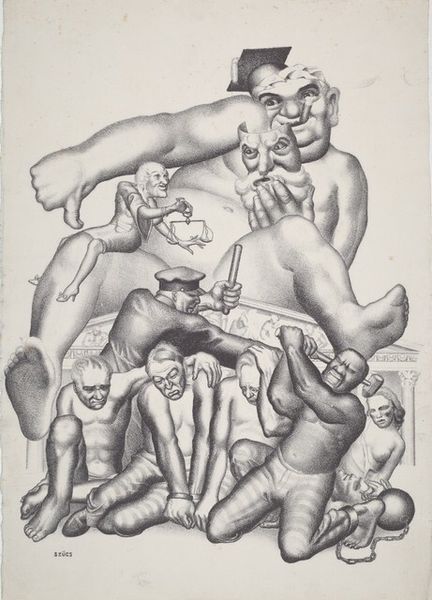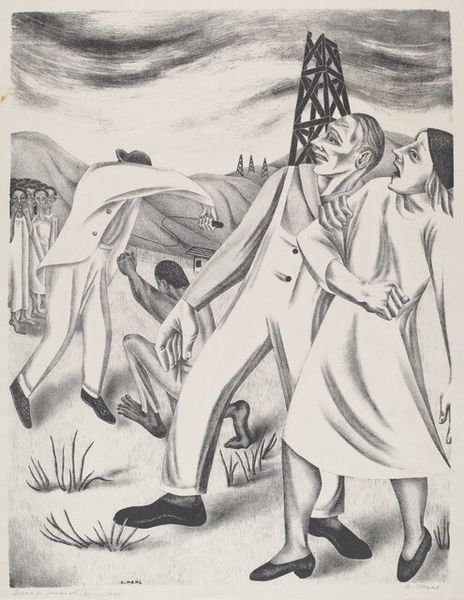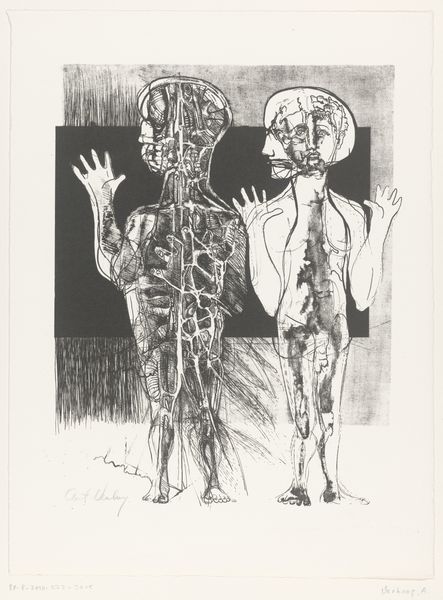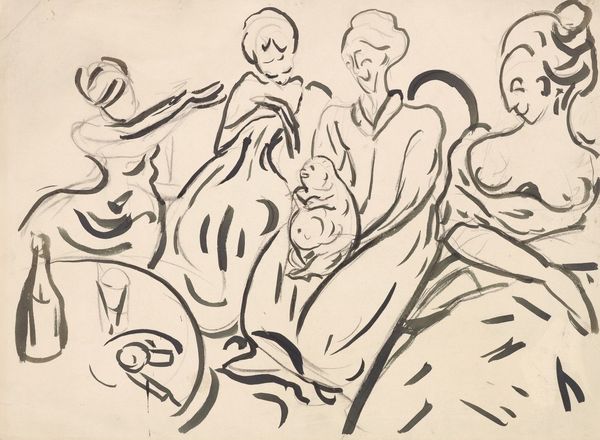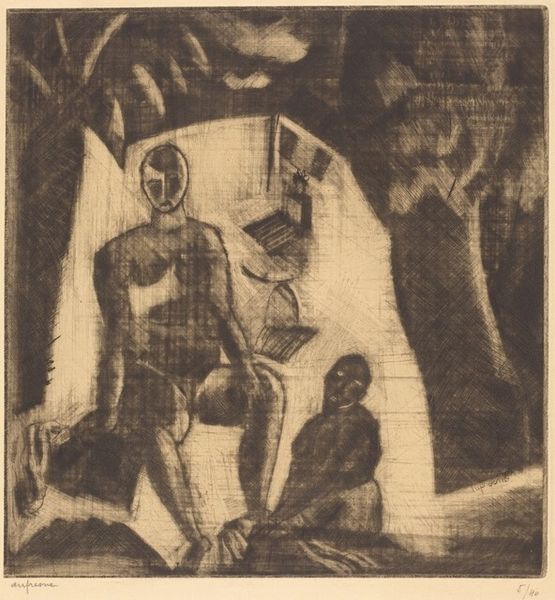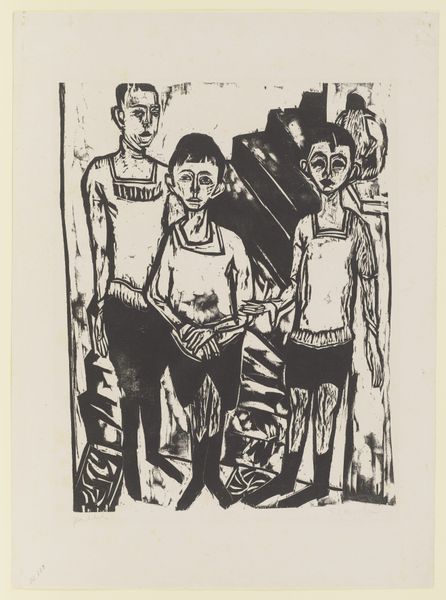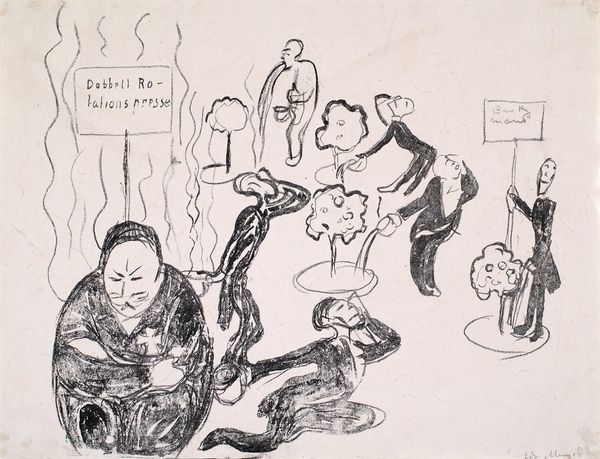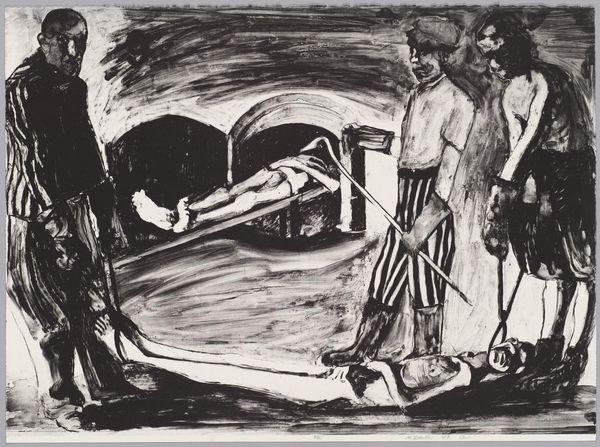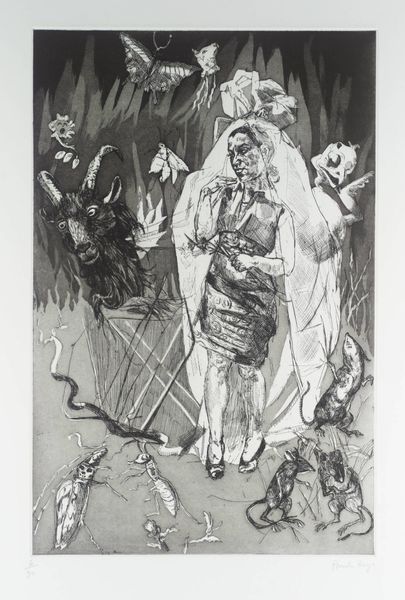
print, graphite
#
portrait
#
pencil drawn
# print
#
social-realism
#
pencil drawing
#
graphite
#
portrait drawing
Dimensions: stone: ca. 540 x ca. 400 mm image: 458 x 312 mm sheet: 583 x 401 mm
Copyright: National Gallery of Art: CC0 1.0
Editor: So, this print is called *Mortgaged* by Claire Mahl Moore, created sometime between 1935 and 1943. It's a graphite print, and honestly, it just exudes sadness. The figures are so elongated and gaunt, and their expressions are… defeated. What's your take on this piece? Curator: Well, its haunting mood is really characteristic of art produced under the Works Progress Administration, during the Great Depression. *Mortgaged* feels like a stark commentary on the social and economic anxieties of that era. Do you see the tiny house in the background compared to the large family grouping in the foreground? Editor: Yes, the house looks so distant, almost like a dream. I see the family in the foreground much clearer. What are your thoughts on why the house is small and out-of-focus? Curator: Consider the title – *Mortgaged*. What does that suggest in relation to this family during the Great Depression? That small house was at risk and barely within reach. Moore’s print, created through the Federal Art Project, participates in the wider social-realist movement, reflecting a commitment to representing the realities of working-class life and critiquing systemic inequalities. The expressions of desperation and defeat drive home a critical public mission. Editor: It makes perfect sense when you put it that way. The government support, but also this looming loss. Are the elongated figures Moore's way of conveying the burden they're carrying? Curator: Precisely. The elongated figures might allude to El Greco or even the German Expressionists of the early 20th century and were certainly artistic license used to depict the psychological strain placed on families threatened by the loss of home. Editor: This print really does a great job of showing both personal struggles and the public consequences of economic hardship, which I find super interesting and thought-provoking now that I get the context behind it. Thanks! Curator: My pleasure. It's fascinating to see how artistic choices reflect broader historical narratives, shaping how we understand the past and the social role that the image played at the time.
Comments
No comments
Be the first to comment and join the conversation on the ultimate creative platform.

